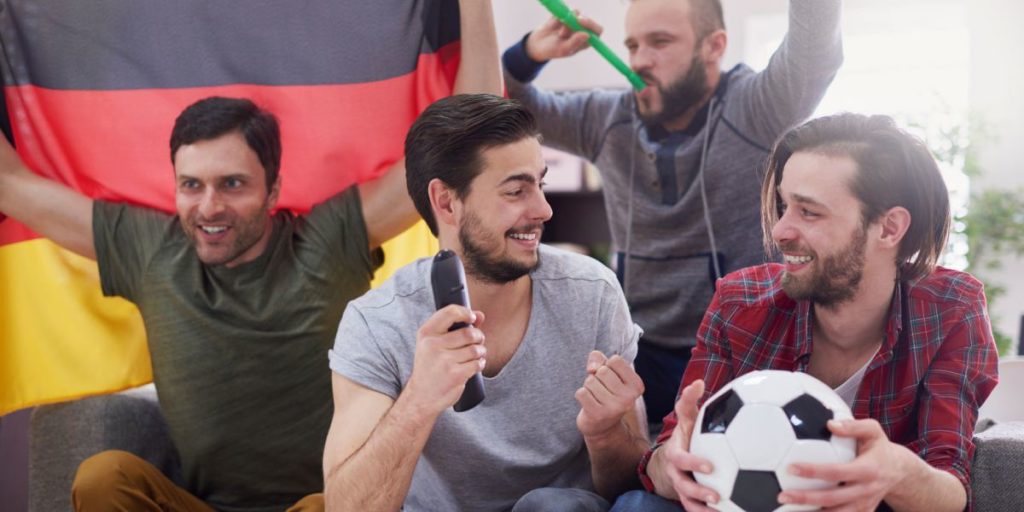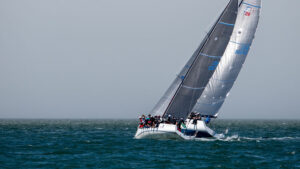
THE GOLDEN DECADE OF STORYTELLING THAT CHANGED FOOTBALL FOREVER
In our latest alumni guest article, Didier Sebastián Montes Kienle from the class of 2019 takes us on a nostalgic journey back to the 1990s, the decade he believes changed the way we see football, forever.
Starting in the mid-1990s, soccer marketing underwent a revolution that forever changed the way stories of its heroes were told.
Not so long ago, only what happened on the pitch would make compelling stories. Especially since the 1990 World Cup in Italy, soccer had lowered the level of interest due to a more conservative trend in the type of game played. It was then when an unexpected actor changed this forever, at least off the field of play. Commercials with players had been around for years, but it was in this decade when new ways for consumer engagement began to be used, using Hollywood’s methods to tell stories.
When it all starts to change
In the late 1980s, Nike had decided to invest in soccer. They were the number one in USA thanks to the deal they signed with superstar Michael Jordan, but something was missing. “How are we going to be the number 1 Sports brand in the world if we are not the leaders of the biggest sport on the planet?” The answer to that question led the Oregon-based brand to dramatically increase its investment in the world of soccer, especially when the 1994 World Cup was to be held in its country and an increase in interest was expected within the domestic market. This was a once in a lifetime opportunity.
In addition to signing great players (up to eight players from the 1994 World Champion Brazil wore Nike footwear), Nike realizes that it needs to turn its stars into heroes, exactly like those who were successful in Hollywood at that time: Sylvester Stallone, Arnold Schwarzenegger or Bruce Willis. And for this, they focused on one tool: storytelling.
Although they had already launched recent ads, such as “The Wall”, it was not until 1996 when Nike and the communication agency W + K created an ad that broke the standard of communication and marketing in football. The name could have been from a Hollywood movie: “Good vs. Evil.” As the name suggests, it is about the battle between heroes and evil, embodied in a demon.
Nike gathered its best players: Eric Cantona, Paolo Maldini, Ronaldo Nazario, Rui Costa, Luis Figo and Patrick Kluivert among others. With the ball as the only weapon, the players faced off a demon and his minions in an epic place like the world-famous Colosseum. Fire, flares, fans, a blind referee, Dobermans … The ad ended with the now legendary “Au revoir” by Eric Cantona, before hitting the demon with a ball. The players just beat the bad guys and saved the world. They weren’t football players anymore, they became heroes.
Storytelling is the secret to success
The ad was a huge success and at Nike they knew they had found the key to attract new fans and made some noise in a market that, until then, had been dominated by European brands. As a curiosity, in the ad some players came out with shirts from brands other than Nike, such as Cantona himself, who wore the Umbro’s Manchester United shirt.
The success of the ad led Nike to redouble its commitment to football and storytelling. That same year he had signed an agreement with the Brazilian National Team and they were the protagonists of his campaign ahead of the 98 World Cup in France, in which the main sponsor was Adidas, the leading brand in football.
To create its new art piece, Nike trusted again in W + K, whose creatives had a great idea: the members of the Brazilian team showing their skills at an airport. And because they wanted to continue imitating Hollywood, they hired the director John Woo, who came from directing “Face Off”, with Nicholas Cage and John Travolta. His is the idea that players would interact with people and objects at the airport so that, according to Woo, “the players could do what they know best: play soccer.”
The shooting was not easy: it was recorded at the Brazilian airport of Galeao during the Christmas holidays. “It was like shooting with rock stars. We forgot how much Brazilians like to party at Christmas”, producer Charles Worford said. Once there, the director gave the players complete freedom and many of their movements were improvised. The final scene, in which Ronaldo hits the stick, was filmed in Italy. “Do you think you can hit the stick from here?” the team asked him. Ronaldo hit the stick in every take they recorded.
The ad was a bombshell: it won publicity awards and his song, recorded in 1966, reached number 1. Brazil lost in the final against France and Adidas paid a worldwide ad saying: “Matches are won on the field, not at the airport. ” But Nike had made 32% of fans think it was the official sponsor of the 98 World Cup, almost at the same level of recognition as Adidas (35%), the actual sponsor. In terms of awareness, Nike took the win.
Building on this success, just two years later Nike shook up the football world again with “The Mission”, in which several players had to steal a ball facing off against an army of samurai robots and escape before the building exploded. An action film compressed in a couple of minutes.
Two years later, for the 2002 World Cup in Korea and Japan, they repeated the success with a series of ads called “Secret Tournament”, in which Nike’s stars participated in a tournament inside a cargo ship. The field was a cage and the master of ceremony was, again, Eric Cantona. This time the director was Terry Gilliam, the mind behind classics like “12 Monkeys”.
The teams, made up of three players, faced each other in a knock-out phase until reaching the final, where Totti, Henry and Nakata, the “Triple Espresso”, won. A rematch was even published ending with the victory of Figo, Ronaldo and Roberto Carlos. After this campaign, Nike becomes the first company in brand recognition in football, surpassing Adidas. And this time, one of his teams won the World Cup. Nike President, Mark Parker, said that “this campaign has been the most complete, global and successful that we have ever run at Nike.”
By then, other brands related to football had understood the power of storytelling. Pepsi created an ad where a team of football stars (several from Nike) had to play a match against sumo wrestlers. The ad was a comic version of that “Good vs. Evil” from almost a decade ago. Adidas also decided on comedy too, with its “Futbolitis” ad, in which Zinedine Zidane and David Beckham appeared in a hospital due to a new disease derived from their love for football.
In 2006 storytelling had already conquered football: Adidas created one of the great pieces in the history of sports marketing: Jose + 10, where two friends create their teams with active players like Zidane or Kaka, and with legends like Franz Beckenbauer or Michel Platini. Brands have continued to bet on this technique to show their players as more than just athletes and ads of this type are already common.
Storytelling is here to stay
Those pieces from the mid-90s to mid-00’s have been key to understanding how sports brands engage with fans today, how they use the figure of the football player as a hero and, instead of selling a product, they tell a story. That is, in a few words, what storytelling is about. Because people feel an innate attraction to a story with heroes and villains, the eternal fight between good and evil. That’s why sports organisations should use storytelling to engage with fans; they need to be aware that, in the current digital landscape, they are not only facing the competition from other Sport events, but from brands such as Netflix or Disney. They are all fighting for the same thing: time people use for entertainment.
For millions, to watch today those ads even means to shed a tear or two, because they are about human feelings: nostalgia and friendship. The dream to become a football star for one day. Those ads touch the very soul of human nature. Because we feel an innate attraction for stories with heroes and villains. Because we love stories that make us cry and laugh, stories that remind us to those times when, just like José and his friend, we just needed a ball to be happy.
Meet Didier Sebastián Montes Kienle, class of 2019

Didier Sebastián Montes Kienle graduated from AISTS in 2019 and now works in communications at The World Games. Didier is a creative specialist with 5+ years of international experience in the sports and editorial industry, including a strong background in journalism and social media management.





